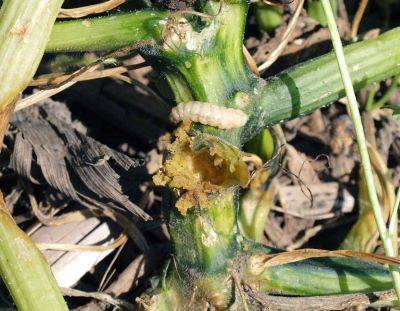Squash Vine Borer

Suppose you have noticed squash plants suddenly wilting; even in the cooler morning temperatures, you must check the stalk for squash vine borers. The adults of this insect are clearwing moths that start to emerge in late June through early July and lay eggs on squash plants. These eggs will hatch in approximately a week, and the larvae will begin feeding on the plant's stems. Squash vine borers feed on summer and winter squash and pumpkins, causing yellowing leaves and wilting. Look for sawdust-type material that is moist, green/orange in color, and located near holes at the base of the stem. Treating the plant for the larvae is difficult, so it is best to monitor the plants before the adult hatches and treat them before the larvae infect the plant.
Treatment should begin when the squash plants start to spread and be reapplied every seven to ten days through the end of June. Be sure to spray the plant crown and the runners' base. Use products with the active ingredient permethrin or bifenthrin, which is applied as a spray or dust. Another option is to plant squash in early July so the plants will mature while the larvae are pupating rather than when they are active. You can also plant Hubbard squash as a perimeter around your field as a trap crop since squash vine borers prefer it to other varieties.

Have questions? Contact our office where our Horticulture Extension Agent will assist you with questions.
Phone: (316) 321-9660
Email: callae@ksu.edu